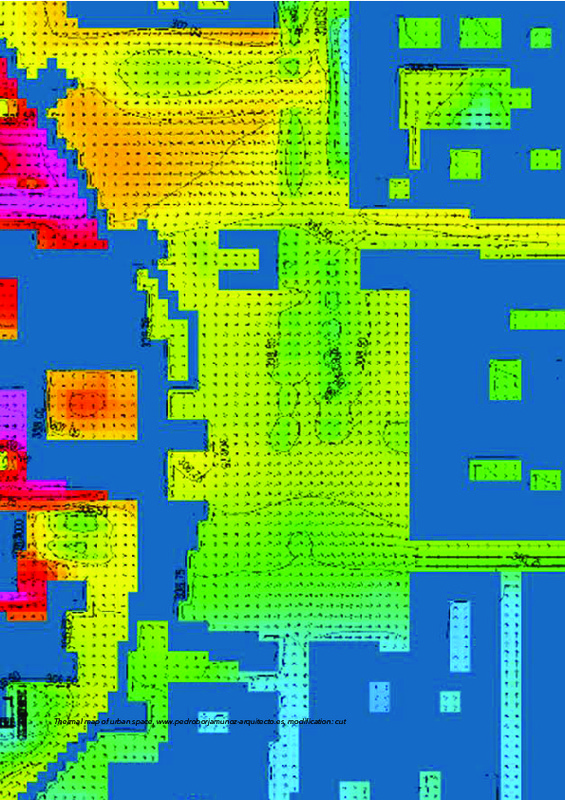JavaScript is disabled for your browser. Some features of this site may not work without it.
Buscar en RiuNet
Listar
Mi cuenta
Estadísticas
Ayuda RiuNet
Admin. UPV
Urban microclimate parameters for buildings energy strategies
Mostrar el registro sencillo del ítem
Ficheros en el ítem
| dc.contributor.author | Lepore, Michele
|
es_ES |
| dc.date.accessioned | 2016-12-22T11:00:01Z | |
| dc.date.available | 2016-12-22T11:00:01Z | |
| dc.date.issued | 2016-12-20 | |
| dc.identifier.uri | http://hdl.handle.net/10251/75640 | |
| dc.description.abstract | [EN] Today, the cities need to increase energy efficiency, reduce polluting emissions and achieve a sufficient level of sustainability. The urban microclimate plays an important role on the buildings energy consumption and the feeling of comfort in the spaces. The microclimate parameters are of central importance for the activities that are carried out in the open spaces and to a large extent determine the use. The responses to the microclimate may be unconscious but very often result in a differentiated use of open spaces just as function of the different climatic conditions. For this reason, the aim of this work is focused on the environmental parameters and on the methodology of analysis aiming at the establishment of bioclimatic strategies for buildings on the basis of morpho-type of the components of the geometries and surface quality of the materials used in urban spaces and in function of the consequent microclimatic conditions obtained. | es_ES |
| dc.language | Español | es_ES |
| dc.publisher | Universitat Politècnica de València | |
| dc.relation.ispartof | VITRUVIO - International Journal of Architectural Technology and Sustainability | |
| dc.rights | Reconocimiento - No comercial (by-nc) | es_ES |
| dc.subject | Urban microclimate | es_ES |
| dc.subject | Comfort | es_ES |
| dc.subject | Energy efficiency | es_ES |
| dc.subject | Bioclimatic design | es_ES |
| dc.title | Urban microclimate parameters for buildings energy strategies | es_ES |
| dc.type | Artículo | es_ES |
| dc.date.updated | 2016-12-22T10:04:06Z | |
| dc.identifier.doi | 10.4995/vitruvio-ijats.2016.6944 | |
| dc.rights.accessRights | Abierto | es_ES |
| dc.description.bibliographicCitation | Lepore, M. (2016). Urban microclimate parameters for buildings energy strategies. VITRUVIO - International Journal of Architectural Technology and Sustainability. 1(2):1-10. https://doi.org/10.4995/vitruvio-ijats.2016.6944 | es_ES |
| dc.description.accrualMethod | SWORD | es_ES |
| dc.relation.publisherversion | https://doi.org/10.4995/vitruvio-ijats.2016.6944 | es_ES |
| dc.description.upvformatpinicio | 1 | es_ES |
| dc.description.upvformatpfin | 10 | es_ES |
| dc.type.version | info:eu-repo/semantics/publishedVersion | es_ES |
| dc.description.volume | 1 | |
| dc.description.issue | 2 | |
| dc.identifier.eissn | 2444-9091 | |
| dc.description.references | AA.VV. Progetto RUROS, progettare gli spazi aperti nell'ambiente urbano: un approccio bioclimatico, CRES (Centre for Renewable Energy Sources, Department of Buildings), 2004 | es_ES |
| dc.description.references | Fanger P. O., Thermal comfort. MacGraw-Hill, 1972. | es_ES |
| dc.description.references | Ghiaus C. and Allard F., Natural ventilation in the urban environment, Earthscan, London 2007. | es_ES |
| dc.description.references | Mayer, E. A new correlation between predicted mean votes (PMV) and predicted percentages of dissatisfied (PPD). In: J. E. Woods, D. T. Grimsrud and N. Boschi, editors. Proc Healthy Buildings/IAQ '97, Bethesda, 2, 189- 194 (1997) | es_ES |
| dc.description.references | Santamouris M., Environmental design of urban buildings, an integrated approach, Earthscan, London, 2006. | es_ES |
| dc.description.references | Santamouris M., Energy and climate in the urban built environment, James&James, London, 2001. | es_ES |








